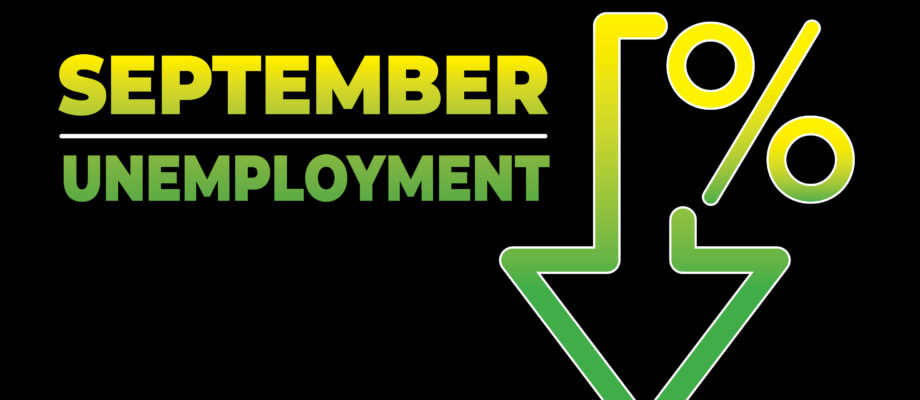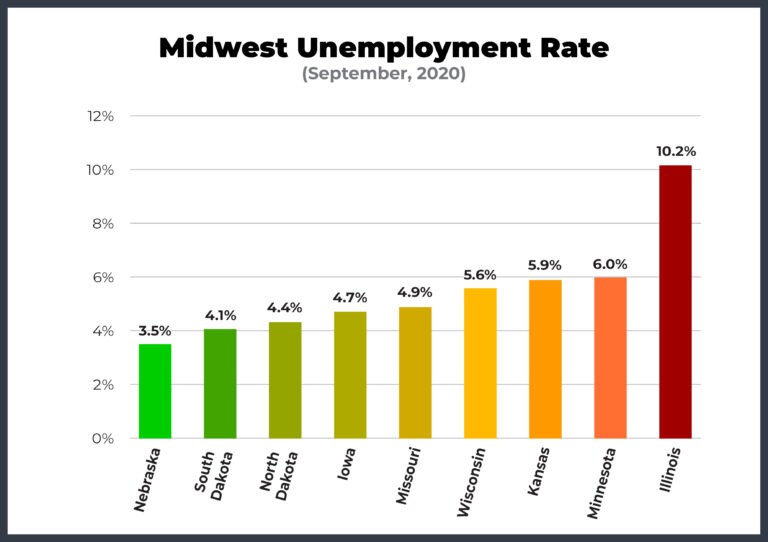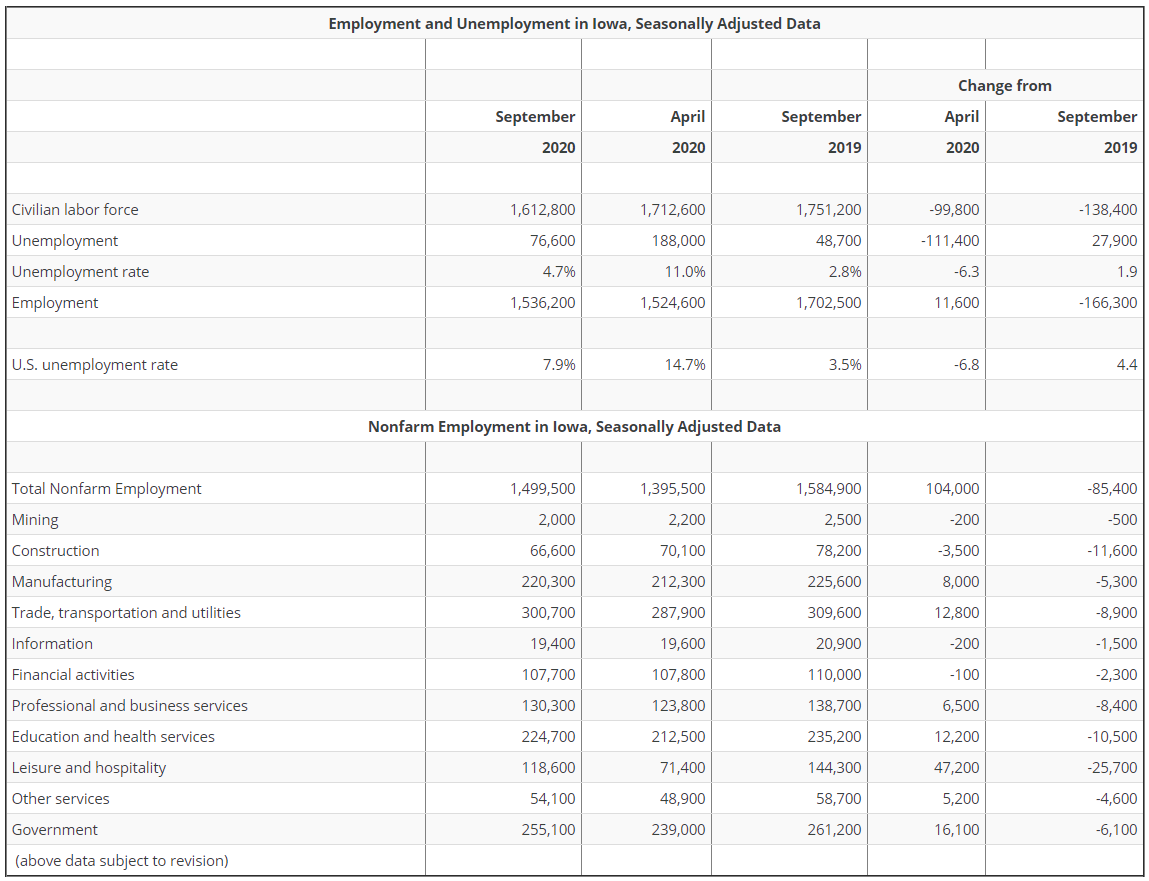
Iowa’s unemployment rate declined from 6 percent in August to 4.7 percent in September. The national unemployment rate for September is 7.9 percent. “September is the fifth consecutive month we have seen a drop in unemployment since the beginning of the pandemic and peak unemployment in April,” said Director Beth Townsend, Iowa Workforce Development. This is good news for Iowa’s economy, especially as the state is recovering from the COVID-19 pandemic and the devastating derecho storm back in August which resulted in at least $7.5 billion in damages.
Nationally, Iowa has the 5th lowest unemployment rate. Nebraska continues to lead the nation with the lowest unemployment rate of 3.5 percent. Illinois, a state that instituted a severe economic lockdown as a result of COVID, has the 5th highest unemployment rate (10.2%) in the nation.

Source: Bureau of Labor Statistics
Iowa Workforce Development reports that Iowa has over 64,000 job openings. Some of the largest gains included leisure and hospitality, while manufacturing also “added jobs for the fifth consecutive month.”

Source: Iowa Workforce Development
The decline in unemployment is a positive economic sign, but uncertainty remains largely driven by the COVID-19 pandemic. The Rural Mainstreet Index in October still indicated that the COVID pandemic continues to impact the economy.
“Recent improvements in agriculture commodity prices, federal farm support, and the Federal Reserve’s record low interest rates have underpinned the Rural Mainstreet Economy. Still, more than one-third, or 35.5%, of bank CEOs reported their local economies were experiencing recessionary economic conditions,” said Ernie Goss, PhD, Jack A. MacAllister Chair in Regional Economics at Creighton University's Heider College of Business.
The Rural Main Street Index reported on some of the main economic areas that have been impacted by the pandemic. The survey of bankers reported that “more than eight of 10, or 80.6 percent, named restaurants/bars as experiencing the greatest negative impacts from COVID-19.” In addition, “other areas identified by bankers as economically impacted were: 3 percent identified farmers, 3.4 percent said medical care, 6.3 percent identified retailers, and 6.7 percent said hourly workers.”
Goss also predicts that “it will take many months of above growth neutral readings to get back to pre-COVID-19 employment levels for the region.”
Iowa’s economy is recovering, and the lower unemployment rate is further evidence that the state is moving in the right direction. Iowa’s budget is also in stable condition. It is imperative as we approach the next legislative session that lawmakers continue to follow a policy of fiscal conservatism, which adheres to conservative revenue estimates, limited spending, avoiding tax increases, and reducing tax rates when possible.
